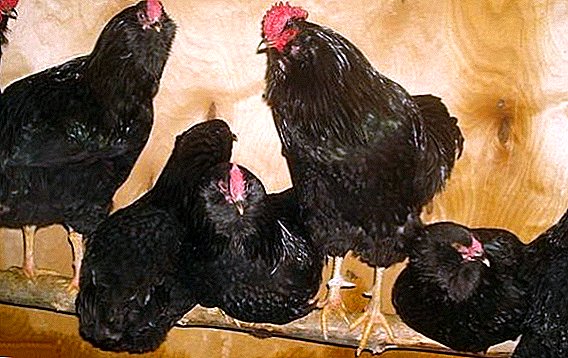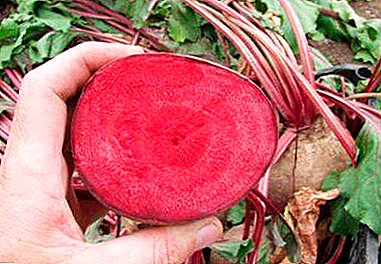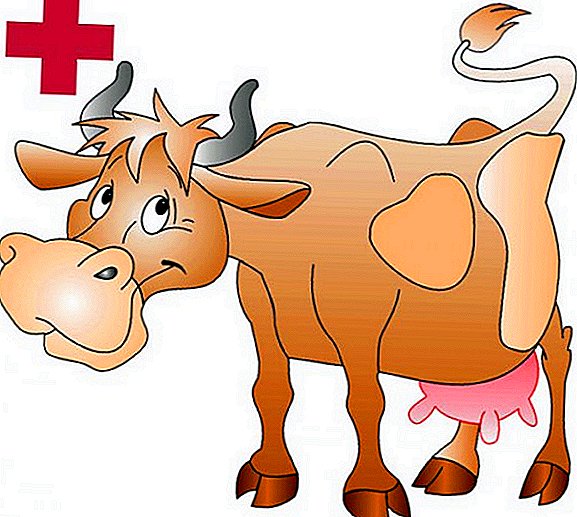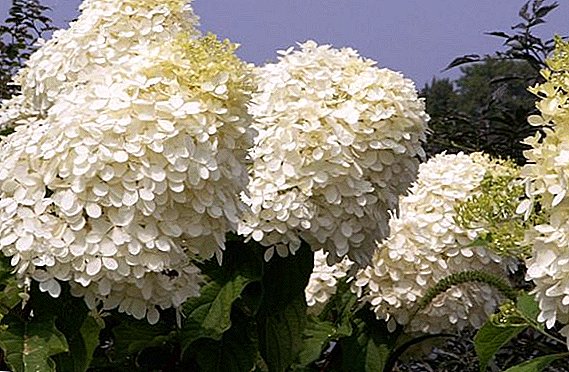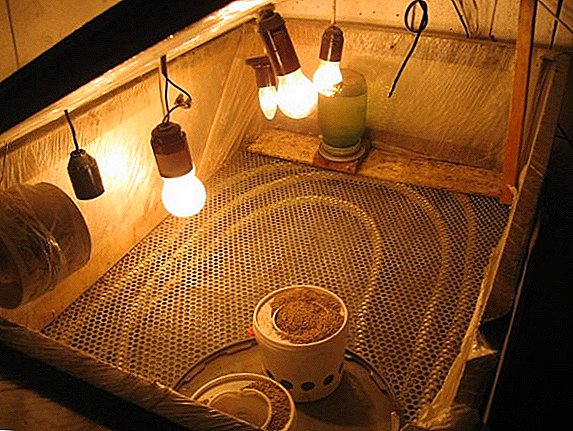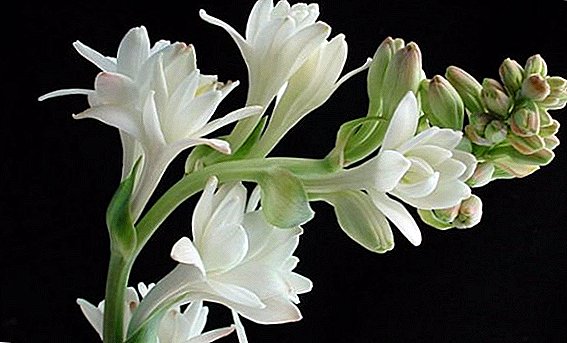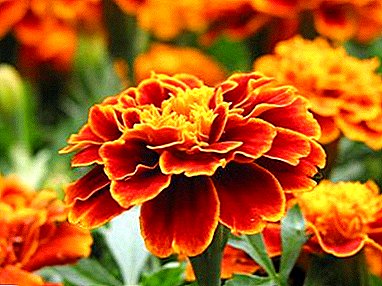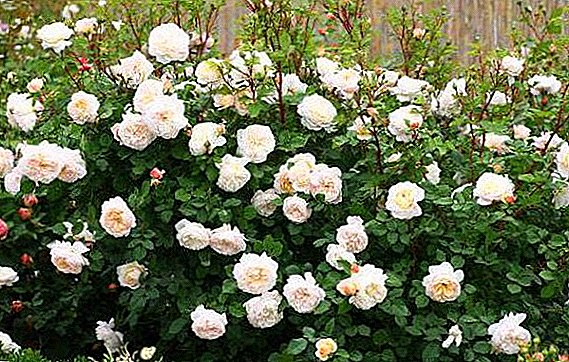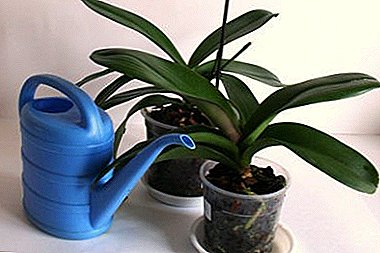
Radish has long been a favorite spring vegetable. Preparation of most salads and dishes is not without it. This vegetable is very useful - it contains many vitamins and trace elements that are beneficial to human health.
The most useful radish is the one that has been grown in its own garden plot, since it definitely does not contain nitrates.
The article will look at the rules and step-by-step instructions for planting radish in the spring in open ground, and also find out how planting in the spring differs from another season.
Correct timing
The best time to plant radish is springThis is due to the biological characteristics of this plant. The landing should be carried out not earlier than the end of March.
Reference! Radish is a frost-resistant crop, its seeds normally tolerate lowering the temperature to minus 5 degrees.
The peculiarity of spring planting radish is that after harvesting, you can plant other vegetables in the same area. (potatoes, cabbage, eggplants). Moreover, the radish is considered a good predecessor for many crops of vegetables. Radish has a short growing season. And the time of its collection coincides with the beginning of the planting of other crops. This makes it possible to reuse the same land plot 2 times.
What is different from other seasons?
 Radish is very picky about temperature values. The optimum temperature for growth is 15-18 degrees. If the temperature is higher, then the foliage begins to grow vigorously in this plant, and the root crop grows poorly. Therefore, it is better to land in early spring. When planting in late spring, radish is adversely affected by long daylight hours and high temperatures. This is reflected in the size of the roots.
Radish is very picky about temperature values. The optimum temperature for growth is 15-18 degrees. If the temperature is higher, then the foliage begins to grow vigorously in this plant, and the root crop grows poorly. Therefore, it is better to land in early spring. When planting in late spring, radish is adversely affected by long daylight hours and high temperatures. This is reflected in the size of the roots.
For the cultivation of radish need a short day light. With a long light day, the radish grows strongly, and the root, on the contrary, develops worse.
Types of planting radish:
- spring planting;
- summer (fruits will be collected in the fall);
- landing in winter (harvest will be in the spring).
Why choose spring planting radish?
- In the spring there is a sufficient amount of moisture in the soil, necessary for the full growth of plants.
- Short daylight hours (which leads to the development of the root, and not the tops).
- Moderate air temperatures, which also determine the development of the root, not the leaves.
- The possibility of using the site after harvesting radish again, for planting other crops.
- Profitability - the demand for radishes is especially high in spring, so it is more profitable to grow it in spring time.
When to grow?
- In Siberia. In Siberia, the spring planting of crops begins later, around the end of April. The main condition for planting radishes is that the soil warms up, the snow cover has descended, after which the land thawed out and became suitable for processing. At this time, you can begin planting this vegetable.
- In the Urals. In the Urals, planting is carried out from mid-April, in the absence of snow cover, when the soil finally thawed out, and there is no likelihood of new frosts.
- In central Russia (Moscow region). When can I plant radishes in the Moscow region? In central Russia, for example, in the Moscow region, these vegetables can be sown in early spring, at the end of March (not earlier). The main criterion for planting - the lack of frost and snow on the soil.
What is the temperature withstand and can survive the frost?
Is the plant afraid of spring frosts? Radish can bear frost without loss to minus five degrees. It is quite frost-resistant and hardy to frost, which is especially important in the regions of Siberia and the Urals.
This culture is cold-resistant, the minimum temperature at which seeds begin to germinate + 5 degrees. The shoots of radish stand frost minus five degrees.
Frost below minus eight degrees can hit the leaves, with prolonged frosts may damage the root. The lack of heat inhibits the development of plants.
Reference! For growing this vegetable the optimum temperature is 18-20 degrees. At temperatures below +10 degrees, growth continues, but it is slow.
Rules and step by step instructions
Suitable grade
The choice of variety is determined by the following conditions:
- landing time;
- a place for planting (open ground or greenhouse);
- region.
For planting in the spring in the open ground is used.
"Early Red"

Early and high-yielding variety. Fruits are dark red in color, with delicate pulp. The grade practically does not shoot.
"16 days"

Very early variety, fruits ripen in sixteen days, have a pink color. Radish has a slightly tart taste and white color of flesh. Fruits practically do not crack.
"Heat"

The early grade, ripens in 20 days. The color of the fruit - crimson, pinkish flesh. The taste is a little spicy.
"French breakfast"

This variety matures in 23 days., fruit shape - elongated. The flesh is white, has a delicate flavor.
For growing in the conditions of Siberia and the Urals, early-maturing varieties are most adapted:
- "Duro";
- "Presto";
- "Poker F1".
They are characterized by increased resistance to low temperatures. Without prejudice, they endure short-term frosts and can grow in adverse climatic conditions.
Buying seeds
In Moscow and St. Petersburg, radish seeds (packaging weighing 3 grams) can be purchased at prices ranging from 10 to 35 rubles. Prices vary by brand and manufacturer. The same variety from different manufacturers may have a different price.
Preparing for sowing
Before planting seeds in the ground they need to sort out. Large seeds with a diameter of 3 mm give good shoots, and a rich harvest. Small and old seeds produce low yields and are prone to tsvetushnosti.
Attention! Many gardeners do not pre-seed seed. But to improve the germination of seeds, it is desirable to withstand within 1 day in a damp cloth. They can also be kept in water for fifteen minutes at a temperature of 45 degrees - this will ensure early germination.
How to prepare the soil in the garden?
 For planting radish you need to plow the soil and harrowing. For small areas, digging and tillage with a rake, for crushing large lumps of earth.
For planting radish you need to plow the soil and harrowing. For small areas, digging and tillage with a rake, for crushing large lumps of earth.
The introduction of manure into the soil is permissible only for 1 year before planting a radish, but not before. This is because radishes do not respond well to fresh manure.
It is recommended autumn dressing of the soil with potash and phosphate fertilizers (superphosphate and potassium nitrate). Feeding should be carried out strictly according to the instructions for the use of this product.
After what crops can you sow?
This crop yields the greatest yield when grown after:
- squash;
- cucumbers;
- squash
You can not grow radishes after cabbage and cruciferous crops.
How to plant and choose the depth?
- On the landing area furrows are created with a depth of 2 centimeters.
- It is desirable to pour a small layer of sand and ash on the bottom of the furrows. The distance in the row between the seeds should be 5 cm. Row spacing - 15 cm.
- After planting, the seeds are covered with earth in a layer of 1 centimeter.
Radish too deep-set gives root crops with a fibrous structure. Landing is carried out, as a rule, manually. From the inventory are needed: rake, chopper. After planting, the beds need to be watered and mulched to preserve moisture in the soil.
Care
Attention! With a lack of moisture in the soil radish prone to flowering.
Conduct a moderate watering of crops once every two days. It is important to prevent the presence of weeds in the garden and on time to remove them. When thickened plantings need thinning crops. If the daylight is too long, it is advisable to reduce the lighting time. - After 18 hours, cover the beds.
In the case of the occurrence of diseases and pests, it is necessary to immediately treat the plantations with insecticides and fungicides. Radish is prone to accumulation of nitrates in fruits. Therefore, it is undesirable to carry out its fertilization with nitrogen fertilizers. Fertilizers are preferably applied to the soil in the fall before spring planting using potash nitrate and superphosphate.
Harvesting and storage
Harvesting is carried out as the enlargement of the roots. Early varieties begin to harvest after 18 days, mid-season after 25 days, late-ripening after a month. Collected fruits are stored in plastic bags in the refrigerator or cellar. Shelf life can be up to 1 month or more. You first need to shorten the spine and cut the tops.
You can not keep the radishes in the soil - the fruits will become hollow.
Difficulties
- Frosts - prolonged frosts can reduce crop yields.
- Pests and diseases can affect radishes, but controlling them with insecticides and fungicides will minimize damage.
With the observance of agrotechnical cultivation and favorable conditions, you will surely get a rich harvest and you will not have any problems.
Growing radish in the spring will allow you to have on your table a delicious and crisp vegetablewhich will emphasize the spring atmosphere. Radish has a pleasant taste and is rich in vitamins, as well as easy to grow.


